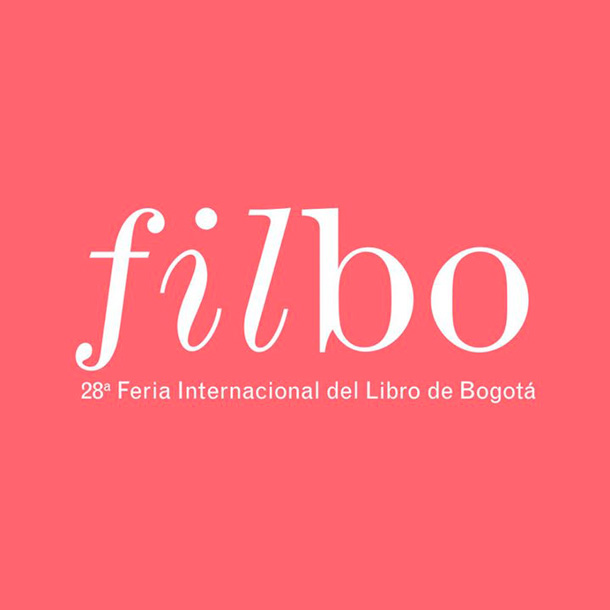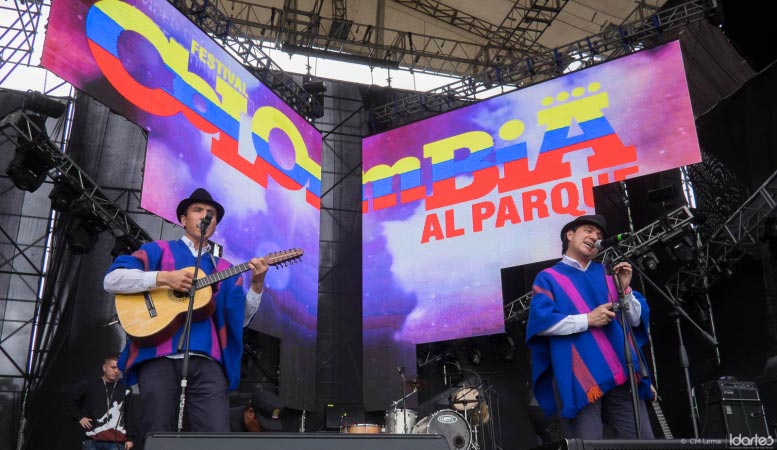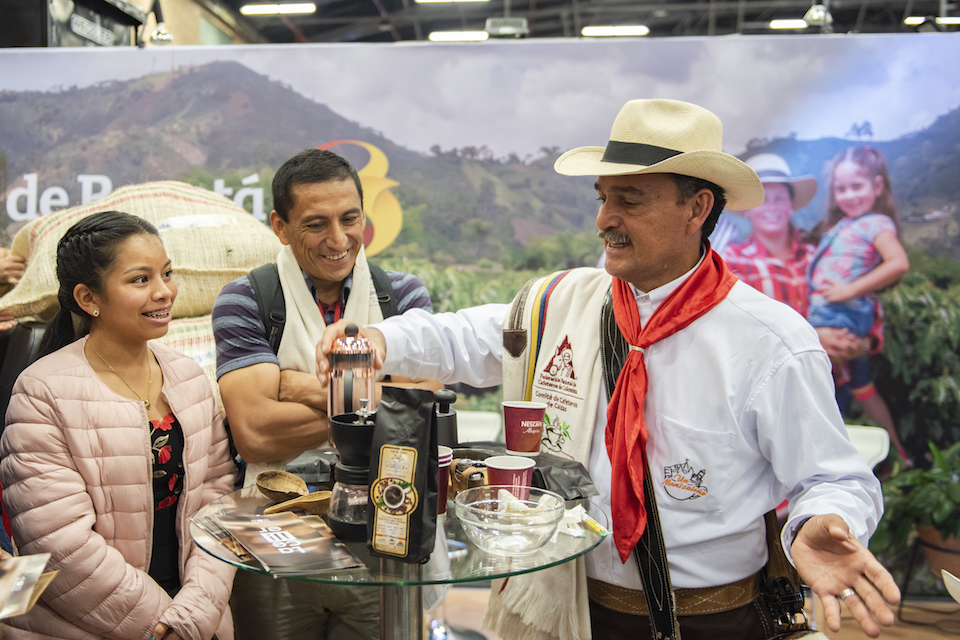 With FILBo in full swing, there’s still plenty of time left to enjoy the city’s biggest book event of the year, with a host of speakers still on the schedule, all sorts of exhibitions and stands to check out and the unmissable orange Holland House.
With FILBo in full swing, there’s still plenty of time left to enjoy the city’s biggest book event of the year, with a host of speakers still on the schedule, all sorts of exhibitions and stands to check out and the unmissable orange Holland House.
If you’ve never been, Corferias, the exhibition space for Bogotá, is enormous. Sprawling across a couple of dozen pavilions, some the size of aircraft hangars, it’s rare to see it completely taken over with one event. FilBo, though, does exactly that. It needs to, too. With thousands of visitors across the whole two weeks, this really is a celebration of reading unparalleled in Colombia.
The Netherlands, this year’s guest of honour, have created an impressive Holland House in pabellón 4. Impossible to miss, this towering orange structure evokes memories of canal-side townhouses, its whole facade a shimmering bright orange. It may be cold and grey outside, but the interior is 100% gezellig!
What? Gezellig? It is a uniquely Dutch word implying coziness and warmth, somewhere that is home. To illustrate this, there are a number of giant sheds, made out like Dutch warehouses. These feature all kinds of things, from Dutch design to bicycling culture. Although the Kingdom of the Netherlands is actually composed of four autonomous countries, with three in the Caribbean, the European mainland is very much front and centre, as Aruba and Curacao are side-lined with brief mentions. At the heart of the pavilion is a frankly gorgeous exhibition of lit walls detailing the interiors of various Dutch dwellings and their counterparts in Bogotá. These serve as windows into Dutch culture, curiously intimate, and yes, gezellig, visions of life in another country, far removed from Colombia. A reminder, too, that all is not always rosy in Europe as the cost of living and debts of many Dutch people are laid bare with brutal honesty.
To the side of this is a warehouse featuring perhaps the best-known Amsterdam canal house – that of Anne Frank. Unlike the actual house in Amsterdam, the queue for this is not horrendous. The display itself is pensive and thorough, rich in details about a life so alien to us now, in a time that defies memory and belief. The rest of the warehouse takes this idea and expounds upon it, encouraging us to think about how we treat others who are different to us and also how those people are treated by society as a whole. This has special resonance in Colombia, of course, a country now looking to the future and how it will deal with those affected by the war and how to reintegrate ex-fighters into society.
Holland House is going large on Dutch design, with two separate dedicated sheds filled with everything from consumables to architecture. The first features a 3D scanning and printing setup, with dozens upon dozens of 3D-replicated models of famous Dutch creations. Chairs alone take up two entire walls, sitting classics cheek-by-jowl alongside bizarre conceptual creations. The second design shed is far more engaging, with actual examples of Dutch design complemented by videos explaining the unmovable elements such as the dijks. An informative presentation explaining the polder model of survival through consensus has many lessons for Colombia in how to co-operate together and be more than the sum of their parts.
 Perhaps the most impressive of the sheds though, is the one dealing with bicycles. Taking us on a bike path both literally around the interior and figuratively through the history of the Netherlands, this delightful exhibition explains all you need to know about Dutch recreational cycling. Sadly, nothing about professional cycling heroes such as Joop Zoetemelk or Jan Janssen. It’s easy to think of Holland in general and Amsterdam in particular as permanent bastions of two wheeled transport, but it was not always thus. It was the result of a lot of work by both activists and the state. After the eruption of driving culture post-war, there came a backlash after a number of children died on the roads. Outraged parents took to the streets demanding “stop de kindermoord”. As a result, the government started to shift their focus towards cycling as a sustainable, sane, method of transport. The result? A system of segregation both envied and copied the world over, including here in the capital.
Perhaps the most impressive of the sheds though, is the one dealing with bicycles. Taking us on a bike path both literally around the interior and figuratively through the history of the Netherlands, this delightful exhibition explains all you need to know about Dutch recreational cycling. Sadly, nothing about professional cycling heroes such as Joop Zoetemelk or Jan Janssen. It’s easy to think of Holland in general and Amsterdam in particular as permanent bastions of two wheeled transport, but it was not always thus. It was the result of a lot of work by both activists and the state. After the eruption of driving culture post-war, there came a backlash after a number of children died on the roads. Outraged parents took to the streets demanding “stop de kindermoord”. As a result, the government started to shift their focus towards cycling as a sustainable, sane, method of transport. The result? A system of segregation both envied and copied the world over, including here in the capital.
And there’s yet more outside the sheds, listening posts with translations of Dutch poetry, a beautiful children’s area, fully interactive and engaging, a mini-stadium for presentations and even a little radio broadcaster! Of course, capitalism is not dead, and there is at the end a giant oval shop to buy books focussing not only on Dutch literature, but also Colombo-Dutch collaborations. So, if the grey drizzle outside is depressing you this week, why not pass by FilBo and enjoy some gezellig exhibitions as you go Dutch?





